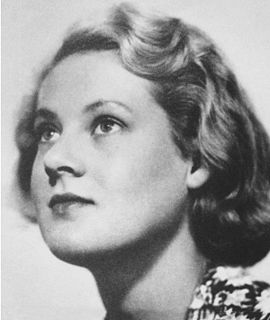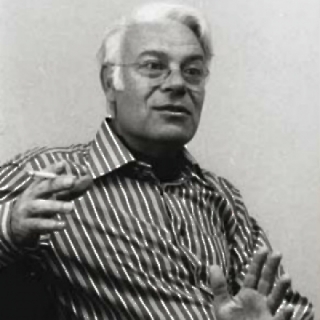Related Research Articles

The National Gallery of Australia (NGA), formerly the Australian National Gallery, is the national art museum of Australia as well as one of the largest art museums in Australia, holding more than 166,000 works of art. Located in Canberra in the Australian Capital Territory, it was established in 1967 by the Australian Government as a national public art museum. As of 2022 it is under the directorship of Nick Mitzevich.

Curtin University, formerly known as Curtin University of Technology and Western Australian Institute of Technology (WAIT), is an Australian public research university based in Bentley, Perth, Western Australia. It is named after John Curtin, Prime Minister of Australia from 1941 to 1945, and is the largest university in Western Australia, with 59,939 students in 2021.

Joy St Clair Hester was an Australian artist. She was a member of the Angry Penguins movement and the Heide Circle who played an integral role in the development of Australian Modernism. Hester is best known for her bold and expressive ink drawings. Her work was charged with a heightened awareness of mortality due to the death of her father during her childhood, the threat of war, and her personal experience with Hodgkin's disease. Hester is most well known for the series Face, Sleep, and Love (1948–49) as well as the later works, The Lovers (1956–58).
Rover Thomas Joolama, known as Rover Thomas, was a Wangkajunga and Kukatja Aboriginal Australian artist.

Judy Cassab, born Judit Kaszab, was an Australian painter.
Vivienne Joyce Binns is an Australian artist known for her contribution to the Women's Art Movement in Australia, her engagement with feminism in her artwork, and her active advocacy within community arts. She works predominantly in painting.
Yanggarriny Wunungmurra (1932–2003) was an artist, yidaki player and leader of the Dhalwangu clan of the Yolngu people of northeast Arnhem Land in the Northern Territory of Australia.
Ella Fry (1916–1997) was an artist, musician, and chairperson of the Western Australian Art Gallery, in Perth, Western Australia from 1976 to 1986.
Alun Leach-Jones, was a British-born Australian artist known for his range of work covering painting, drawing, sculpture, linocuts, screenprints and etchings.

Udo Sellbach (1927–2006) was a German-Australian visual artist and educator whose work focused primarily around his printmaking practice.
Julie Gough is an artist, writer and curator based in Tasmania, Australia.
Robert Stewart Bell was an Australian artist and arts curator, best known for his focus on decorative arts. He also worked as an artist in ceramics and textiles.
Miriam Stannage (1939–2016) was an Australian conceptual artist. She was known for her work in painting, printmaking and photography, and participated in many group and solo exhibitions, receiving several awards over her career. Her work was also featured in two Biennales and two major retrospective exhibitions.
Sally Robinson is an English-born Australian artist. She has had a long career as a portrait artist and designer, painter and printmaker, teacher and lecturer. Her work is represented in private and public collections around Australia.
Carol Rudyard was an English-Australian visual artist, known for her audio-video art installations. She was nominated as a Western Australian Living Treasure in 2004. Her works are held in the National Gallery of Australia, the Art Gallery of New South Wales, and the Lawrence Wilson Art Gallery.
eX De Medici is an Australian artist, whose works include Installation art, painting, photography, and drawing. Her works often deal with concepts of power and violence, and recurring motifs include skulls, helmets, guns and the swastika symbol. She has exhibited widely across Australia and is included in the collections of the National Gallery of Australia (NGA), Canberra Museum and Gallery, Australian state galleries and in private collections. de Medici was an Artist Fellow at the CSIRO for more than a decade, was awarded a print making fellowship in 2006, and was an official war artist for The Regional Assistance Mission to Solomon Islands. She will be a featured artist in the NGA's major exhibition in 2020-2021, Know My Name, that will feature Australian women artists 1900 to today.
Dhuwarrwarr Marika, also known as Banuminy, a female contemporary Aboriginal artist. She is a Yolngu artist and community leader from East Arnhem Land in the Northern Territory of Australia. She belongs to the Dhuwa moiety of the Rirratjingu clan in the homeland of Yalangbara, daughter of Mawalan Marika. Marika is an active bark painter, carver, mat maker, and printmaker.
Christian de Vietri is an Australian artist.
Australian poster collectives were established in the late 1960s, 70s and 80s mainly in Sydney, Melbourne and Adelaide, but also in other Australian capital cities. The collectives were formed by artists concerned with social justice, women's rights, political activism, anti-Vietnam war protest, environmentalism, LGBT rights and Indigenous peoples' rights. Collectives also made posters for concerts, bands, marches and community groups. Feminists were active in the collectives and some were women-only collectives. The list of collectives and artists in this article indicates women were leaders in the poster collective movement, establishing groups, providing training, opening the groups up to other women and decision-making by consensus. The collectives were considered to be democratic art movements outside the gallery systems, able to quickly reflect changing social and political views and challenge social norms by designing, printing and displaying posters in public areas. Some artists were members of more than one collective and often did not sign their name to posters but attributed them to the collective. Similar collectives emerged in the UK, Europe, the US and Cuba during that time. This article covers Australian poster collectives from the 60s to 80s rather than later collectives from the 1990s such as RedPlanet.
Eveline Kotai is an Australian artist. Kotai is known for her idiosyncratic stitched collages, which involves the artist cutting up her paintings into thin strips and reconfiguring them across a surface with the use of a sewing machine and invisible thread.
References
- 1 2 "Bovell, Penny 1956 - NGA collection". cs.nga.gov.au. Retrieved 8 March 2020.
{{cite web}}: CS1 maint: url-status (link) - ↑ Murray, Sandra (2012), Out There : Penny Bovell and Penny Coss, Penny Bovell & Penny Coss, ISBN 978-0-646-58528-4
- ↑ Hoffie, Pat; Bovell, Penny; Jeppe, Ann (1987), "Feminist ideology and art practice. -Collection of articles-", Praxis M (18): 36–40, retrieved 7 March 2020